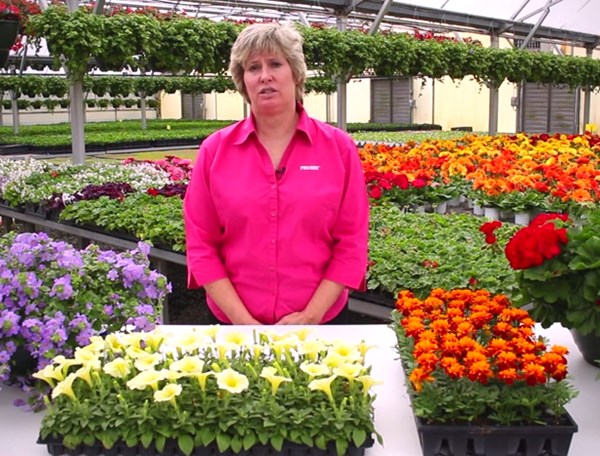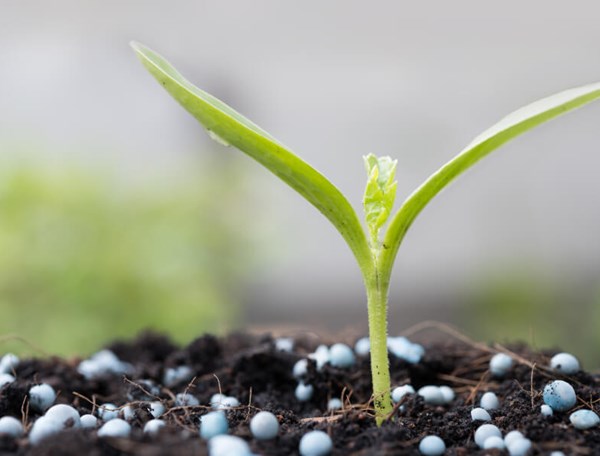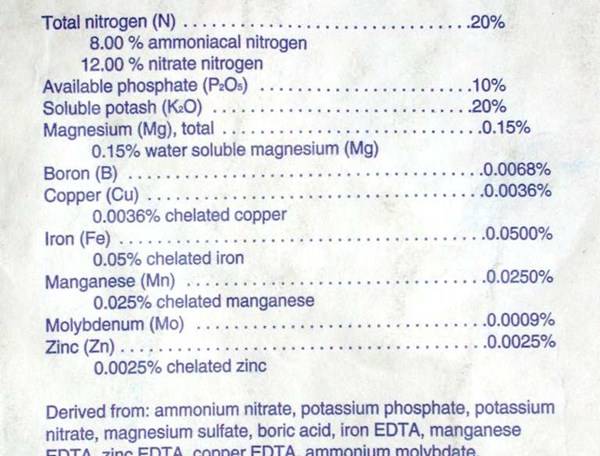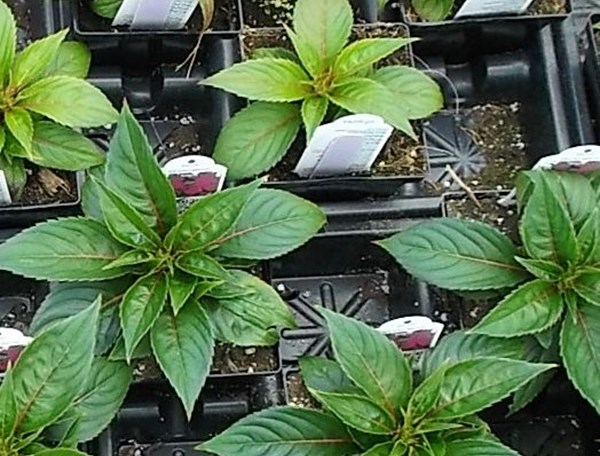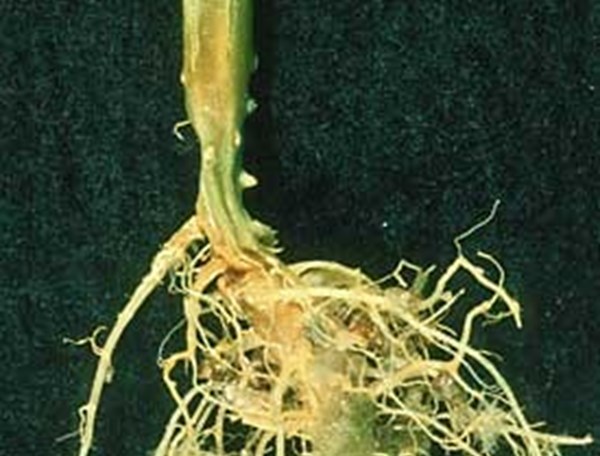Training Center
Fertilizer Rates and Impact on Root Diseases
Thursday, September 7, 2023 | Ed Bloodnick
PDF version of this text: Fertilizer Rates and Impact on Root Diseases
Ask any grower what the primary cause of root rot diseases is in their plants and they will tell you it is caused by over watering.
While over watering may enhance disease development it is not the sole factor. For any disease to attack a plant, three conditions must be present:
- The pathogen must be present.
- The environment must allow for growth of the disease organism.
- There must be a host plant that is susceptible to an attack by the pathogen.
While over watering is a major contributing factor providing a favorable environment for root rot disease development, it cannot cause damage to the plant unless the plant is in a weakened condition and therefore susceptible to attack.
Anything that contributes to "less than optimal growth" can result in a weakened plant, which is then more susceptible to disease organisms. Two commonly overlooked factors to poor growth performance are under and over fertilization.
What Are The Signs of Under Fertilization?
What to Look for
Impacted plants not only exhibit slow growth but are weak in general and are at an increased risk of both diseases and insect attacks. Once attacked, plants will use additional nutrients in its attempt to fight off the disease. If plant nutrition is not quickly corrected, it can lead to compounding of damage.
How to Correct
Correct easily by applying water-soluble fertilizer which provides nutrients that are immediately available for plants to use.
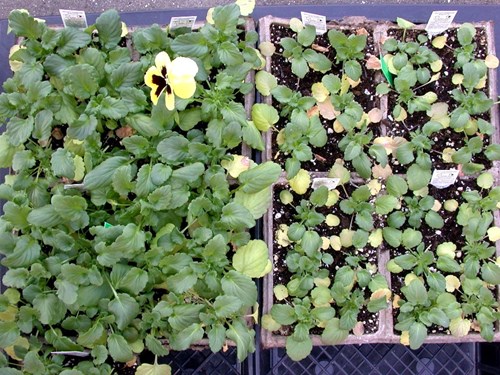
Example of fertilizer application for Pansy. Adequate application (left) and under application pansies (right).
How to Fix Over Fertilization?
What to Look for
Over fertilization on the other hand can be much harder to correct, especially if it is the result of high applications of Controlled Release Fertilizer (CRF). Over fertilization damages plants in several different ways. It often results in very “leggy”, soft growth of plants and high salt levels from fertilizers can burn delicate root tips. Both of these compromised conditions will result in weakened plants and increased susceptibility to disease attacks.
How to Fix
If the cause of over fertilization is from elevated levels of water-soluble fertilizer, the situation can be corrected by leaching the growing medium with water to remove excess nutrients and then adjusting the rate of future fertilizer applications to meet the needs of the plants.
Over fertilization when using CRFs can result from either the presence of too much fertilizer or its faster than expected release because of high temperatures. In either case, there is no quick solution to removing the excess nutrients.
The grower must leach with water on a regular basis to remove the excessive fertilizer as it is released from the prill. In general, it is best to apply CRFs at a medium rate for the crop and supplement with water soluble fertilizer if additional nutrition is needed.
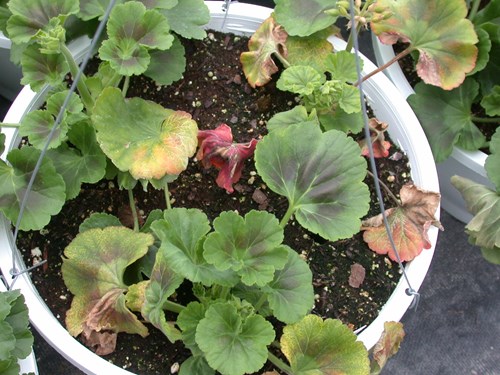
Example of over fertilization of ivy geranium from excessive CRF. Note the chlorosis and necrosis of older leaves from excessive fertilizer uptake.
Prevention is Key
Disease organisms are microscopic and are often undetected until the damage has occurred, so preventive monitoring is highly recommended. The most effective method of reducing the incidence of root rot in plants weakened by nutrient issues is to keep the crop healthy in the first place by monitoring soil EC and making the necessary modifications to the nutritional program before the plant is weakened and exhibits growth related problems.
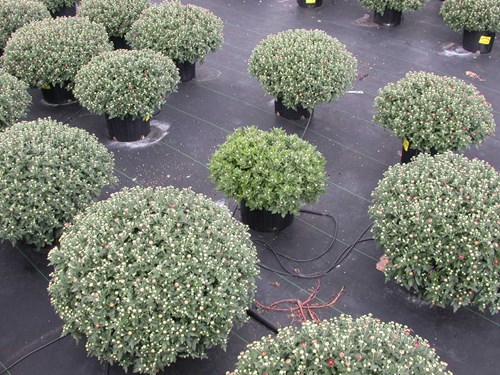
Example of Pythium in garden mum (center) as a result of over fertilization and disease pressure.
Fertilizer Application Rates
To avoid problems with fertilizer application rates, it is recommended to check injector flow and application rate with EC meters on a regular basis to be sure fertilizer application rate is correct. For control release fertilizers (CRF), use lower rates and supplement with water soluble fertilizer, if required.
Leach crops regularly to be sure to reduce salt build up. Manage fertilizer application rate for crop requirements by periodically testing growing medium EC, pH and nutrient content.
Media sampling can be matched with plant tissue samples to determine the elemental content of plant tissue. From this information, you can fine tune fertilizer applications to minimize plant stress for healthier plants to lessen chances of disease occurrence. PRO-MIX® BIOFUNGICIDE™* + MYCORRHIZAE™ products can reduce incidence of disease and lessen the effects of fertilizer imbalances, as well.
For more information, please contact your Premier Tech Grower Services Representative.
 |
 |
 |
 |
|---|---|---|---|
|
Ed Bloodnick |
Nathan Wallace-Springer |
Lance Lawson |
Victor Brantly |
 |
 |
 |
|
|
Troy Buechel |
Susan Parent |
Jose Chen Lopez |
PRO-MIX® is a registered trademark of PREMIER HORTICULTURE Ltd.
Related Articles
-
Influence of Fertilizer on Growing Media
Horticulture Specialist from our Grower Services team, JoAnn Peery, explains the 2 main factors to determine the fertilizer you should use depending on your water quality and the kind of crops you are growing.
-
Pros and Cons of Using Controlled-Release Fertilizers in the Greenhouse
The focus for this article is to discuss the pros and cons of using a controlled-release fertilizer compared to traditional water soluble fertilizers.
-
Fertilizers are necessary to feed plants with nutrients that are not available in the growing medium solution or the irrigation water.
-
Relationship Between Fertilizer & Plant Stretching
The three main attributes associated with plant stretch from fertilizer are: fertilizer application rate, nitrogen forms and phosphorus.
-
Avoiding Root Disease in Greenhouse Vegetables
Pathogens are always present in the greenhouse and are a continuous challenge for greenhouse vegetable and herb growers.

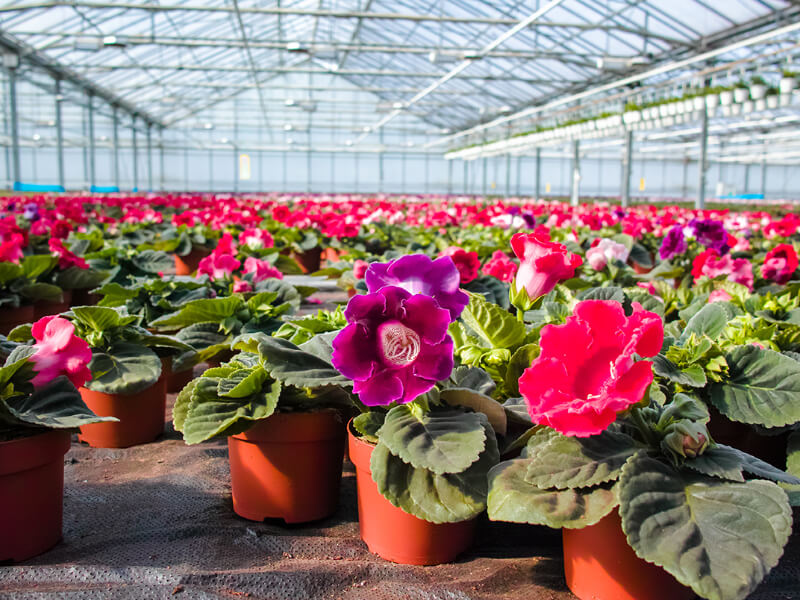
 Where to find our products
Where to find our products
